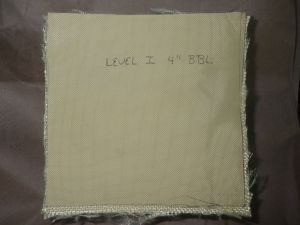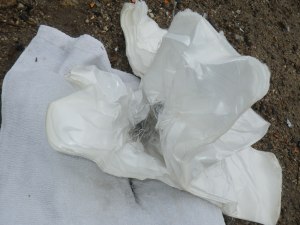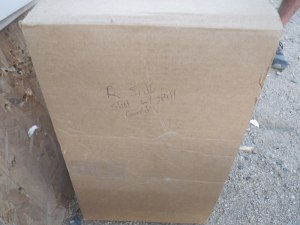Over the 40 plus years the NIJ has been certifying body armor, much has changed. Back in the late 60’s, through the 70’s and early 80’s, handgun threats on the streets escalated from .38 SPL RNL and .22 LR out of short barrels to hot 9mm FMJ and .44 Magnum JSP. The level I rating virtually disappeared as a result (though it is still better than nothing, see my shoot tests with Level I panels).
But perhaps the biggest changes have been in the area of rifle threats, specifically AP (Armor Piercing). At the outset, NIJ level IV was rated to stop arguably the most potent threat that could be regularly encountered (and all comparable but lesser threats), the .30-06 M2 AP 163gr. At 2750 FPS, this round was (and still is) formidable. Having a high molybdenum and vanadium tool steel core hardened to around 59-61 Rockwell C hardness, it can punch through 8mm of RHA at 100M. Comparable Soviet and ComBloc rounds do slightly worse.
But fast forward more than three decades, and the threat profile has changed. WC (tungsten carbide) core rounds are no longer a rarity, and their penetration profile is far better than the M2. The American military has recently introduced a second generation WC projectile as a replacement for the first generation M993. Called the ADVAP (Advanced Armor Piercing) round, it is essentially the same design as the M80A1 projectile, with a hardened WC “arrowhead” swaged to a copper alloy base/driver. At $13 -per round- it is designed to cope with advanced emerging armors.
Which means the threats are not unilateral. Advanced Russian and Chinese designs must be assumed to be at least comparable to the M993 (7.62), M995, and AP4 (5.56) rounds. Which is why the NIJ is strongly encouraged to drop the M2 AP as the baseline round for the highest rated rifle plates, and begin using the M993 (as sourcing the newest Russian rounds for testing is virtually impossible at this time).
Testing by Buffman, of BuffmanRange has shown that there are plates that are (barely) capable of stopping the M993 round (and by extension, the M995 and AP4), but it is a crap-shoot. They are neither designed, nor rated for WC threats, which necessitates a completely different design philosophy.
The second problem is that of fragility. The current NIJ IV rating specifies a SINGLE M2 AP round must be stopped, in order to meet the standard. The NIJ III is not much better, specifying 6 rounds of M80 ball in a 6″ circle. In nearly every case, the plate is reduced to rubble, with the entire strike face compromised after a single round. A more reasonable standard is to require 8 rounds in a 6″ circle, for both levels of plate. More difficult? Absolutely. But in keeping up with advancing threats, absolutely necessary.
Here at D-Rmor Gear, we are not satisfied to rest on our laurels, and have been working on these problems tirelessly over many years. As a result, we will have a major announcement by the end of the month. Stay tuned.





































